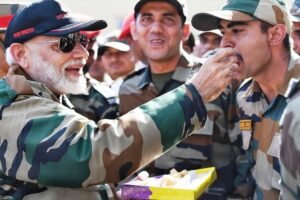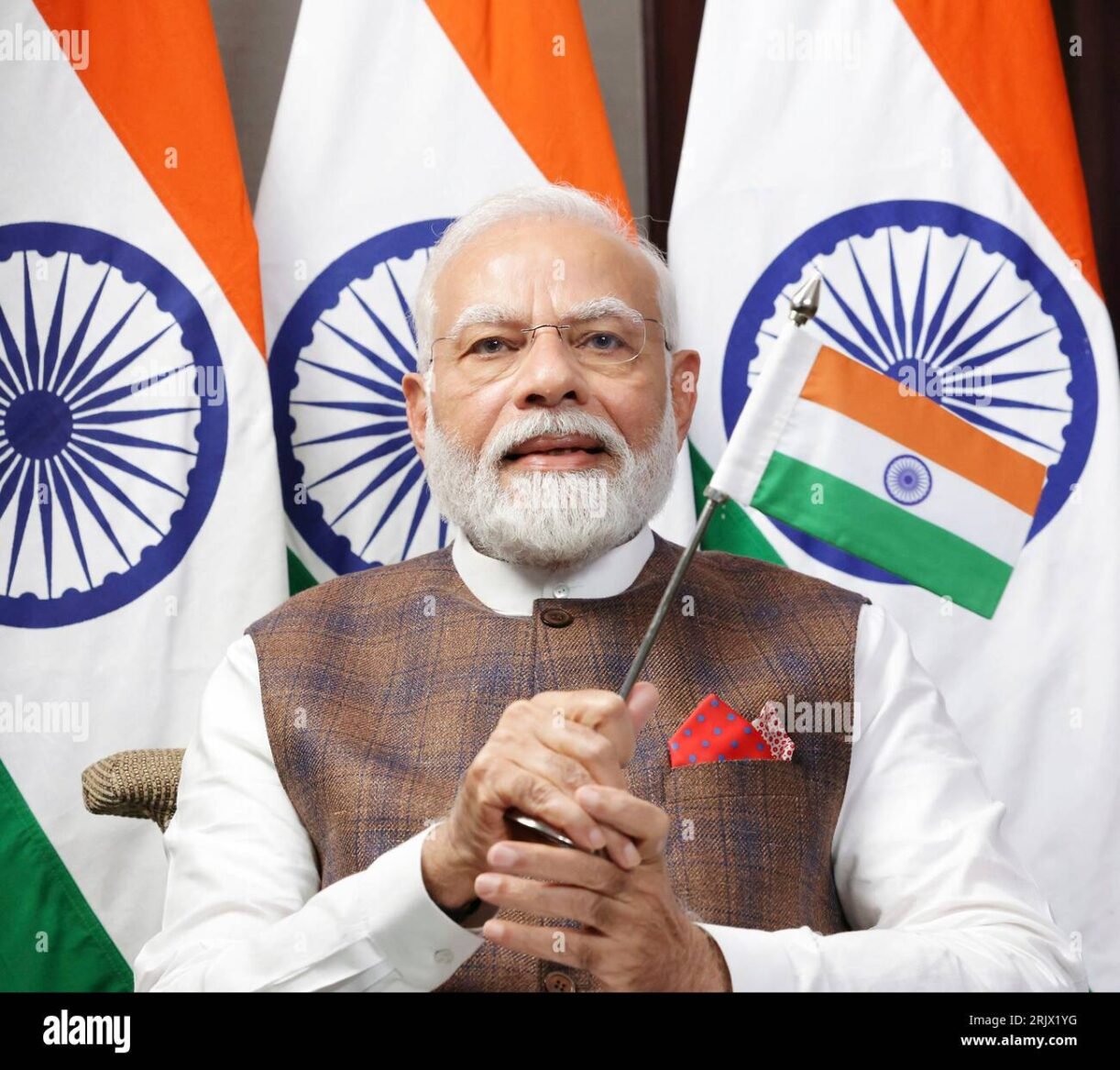Prime Minister Narendra Modi, often referred to as PM Modi, is a prominent figure in Indian politics. Born on September 17, 1950, in Vadnagar, Gujarat, Modi’s journey from being a humble tea seller to becoming the Prime Minister of India is nothing short of extraordinary.
Modi’s early life was marked by his involvement in the Rashtriya Swayamsevak Sangh (RSS), a right-wing Hindu nationalist organization. His dedication and hard work earned him recognition within the organization, and he later joined the Bharatiya Janata Party (BJP).
In 2001, Modi became the Chief Minister of Gujarat, a position he held for three consecutive terms. During his tenure, he implemented various policies and initiatives that transformed Gujarat into one of India’s most prosperous states. His dynamic leadership and focus on development earned him nationwide acclaim.
Modi’s rise to power as the Prime Minister of India came in 2014 when the BJP secured a majority in the Lok Sabha elections. Since then, he has embarked on a mission to transform India into a global superpower.
As Prime Minister, Modi has initiated numerous schemes and programs aimed at improving the lives of Indian citizens. Some of his notable initiatives include:
- Swachh Bharat Abhiyan (Clean India Campaign): A nationwide cleanliness drive to promote sanitation and hygiene.
- Make in India: An initiative to boost manufacturing and promote India as a global manufacturing hub.
- Pradhan Mantri Jan Dhan Yojana: A financial inclusion program aimed at providing banking services to the unbanked population.
These initiatives, along with many others, have had a profound impact on various sectors of the Indian economy and society.
PM Modi’s portfolio also includes his foreign policy achievements. He has actively engaged with world leaders and strengthened India’s position on the global stage. His efforts have resulted in improved relations with several countries, increased foreign direct investment, and enhanced cooperation in various fields.
PM Narendra Modi’s work and vision have gained him immense popularity, both within India and internationally. His commitment to development, innovation, and inclusive growth continues to inspire millions.

A Visionary Leader
From a tea seller in Vadnagar to the Prime Minister of the world’s largest democracy, Narendra Modi’s story is one of perseverance, bold leadership, and national resurgence. Rising through the ranks of the Rashtriya Swayamsevak Sangh and later the BJP, Modi became Gujarat’s Chief Minister in 2001, where he transformed the state into a model of economic growth and governance.
In 2014, Modi led the BJP to a landslide victory, promising development, nationalism, and strong governance. His first term saw transformative initiatives: Swachh Bharat, Jan Dhan Yojana, Make in India, and Digital India. He returned with an even bigger mandate in 2019, implementing key decisions such as the abrogation of Article 370, the Citizenship Amendment Act, and steering India through the pandemic with the world’s largest vaccination campaign.
But it was his strategic and technological vision that would place India among the global elite.
Chandrayaan & India’s Rise in Space
India’s lunar odyssey began with Chandrayaan-2, and despite a hard landing, Modi stood with ISRO scientists. That symbolic gesture set the tone for future successes. In 2023, Chandrayaan-3 made India the first country to land on the Moon’s south pole—winning global admiration and scientific prestige.
Then came Mission Sindoor in 2025—India’s first successful Venus exploration mission. It was a scientific marvel, studying Venusian clouds and geological patterns. But “Sindoor” wasn’t just about space—it was also a codename for one of India’s most daring covert military operations.
Operation Sindoor: 23 Minutes That Changed the Game
In early 2025, intelligence warned of heightened terrorist activity across the Line of Control (LoC), supported by advanced Chinese-made air defense systems in Pakistani-occupied Kashmir (PoK). The response: Operation Sindoor.
In a surgical air strike lasting just 23 minutes, the Indian Air Force (IAF) executed one of its most precise operations to date. Using advanced electronic warfare systems, India jammed and bypassed Chinese-origin radar and air defense systems, effectively neutralizing Pakistan’s early warning capability. Targeted militant bases and weapon stockpiles were destroyed with pinpoint accuracy.
What made the operation extraordinary wasn’t just the speed or precision—but the message. Pakistan’s reliance on Chinese defense hardware had been rendered vulnerable, exposing cracks in its military preparedness.
Modi, in a carefully worded statement, said:
“India seeks peace, but we will not hesitate to act when our sovereignty is threatened. The strength of new India lies in resolve, speed, and silence.”
Strategic Impact on Pakistan
Pakistan was caught off guard—both militarily and diplomatically. While India was landing on Venus and making lunar history, Pakistan was grappling with economic instability and international isolation. Operation Sindoor showcased India’s technological superiority, and its ability to wage modern hybrid warfare—from space to cyberspace, and battlefield precision to narrative dominance.
Globally, India’s stature rose. Its leadership in space, defense, and digital infrastructure made it a sought-after strategic ally, while Modi’s doctrine of “Shakti and Shanti” (Power and Peace) resonated in a volatile world.
Conclusion
As of 2025, Narendra Modi’s legacy is defined not just by development and diplomacy, but by a bold redefinition of India’s global identity. From Chandrayaan to Mission Sindoor, and from economic empowerment to surgical precision, he has steered India into a new era—confident, capable, and uncompromising.
His journey is not merely political—it is a chronicle of a nation that dared to dream big and had the courage to act decisively.

